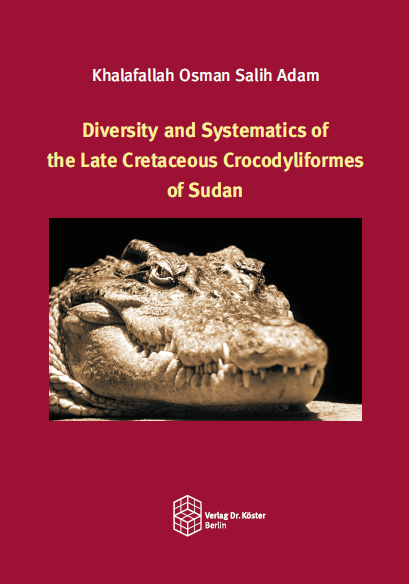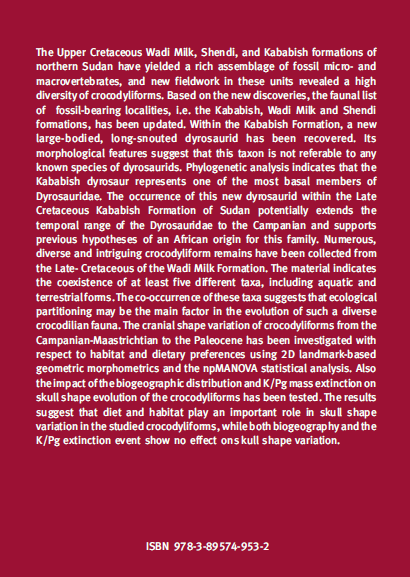The Upper Cretaceous Wadi Milk, Shendi, and Kababish formations of northern Sudan have yielded a rich assemblage of fossil micro- and macrovertebrates, and new fieldwork in these units revealed a high diversity of crocodyliforms. Based on the new discoveries, the faunal list of fossil-bearing localities, i.e. the Kababish, Wadi Milk and Shendi formations, has been updated.
Within the Kababish Formation, a new large-bodied, long-snouted dyrosaurid has been recovered. Its morphological features suggest that this taxon is not referable to any known species of dyrosaurids. Phylogenetic analysis indicates that the Kababish dyrosaur represents one of the most basal members of Dyrosauridae. The occurrence of this new dyrosaurid within the Late Cretaceous Kababish Formation of Sudan potentially extends the temporal range of the Dyrosauridae to the Campanian and supports previous hypotheses of an African origin for this family.
Numerous, diverse and intriguing crocodyliform remains have been collected from the Late- Cretaceous of the Wadi Milk Formation. The material indicates the coexistence of at least five different taxa, including aquatic and terrestrial forms. The co-occurrence of these taxa suggests that ecological partitioning may be the main factor in the evolution of such a diverse crocodilian fauna.
The cranial shape variation of crocodyliforms from the Campanian-Maastrichtian to the Paleocene has been investigated with respect to habitat and dietary preferences using 2D landmark-based geometric morphometrics and the npMANOVA statistical analysis. Also the impact of the biogeographic distribution and K/Pg mass extinction on skull shape evolution of the crocodyliforms has been tested. The results suggest that diet and habitat play an important role in skull shape variation in the studied crocodyliforms, while both biogeography and the K/Pg extinction event show no effect on skull shape variation.


